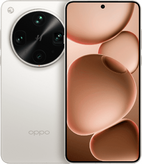Search Best camera phones
Need a good cameraphone? Here you will find an overview of the best tested camera phones at the moment. Each and every one of them has a very well rated camera on board. If photography is important to you, then this is the starting point of your search. Read more
Almost every smartphone today has one and often multiple cameras. Manufacturers try to spawn you with megapixels, high ISO values and multiple sensors. Don't let that seduce you. There are companies that test camera phones in detail as objectively as possible. DxOMark is one of those. Phones with a score of at least 105 can be found here.
DxOMark
The above list is based on the results of DxOMark Image Labs from France. They have been testing camera sensors since 2008. They assign a score based on colour depth, dynamic range and low-light performance. Since 2012 DxOMark has also been testing mobile phones and from 2019 the self-image camera will also be scored.
DxOMark's measurement method is not uncontroversial. Assessing photo quality is partly subjective. Some things like colour fastness and noise are easy to measure, others not. In the end, one person likes a certain picture better than another. DxOMark also gets paid by phone manufacturers to test their products. That affects objectivity. In general, the DxOMark score is more of a guideline than a hard statistic. Of all the other available alternatives, the DxOMark score is one of the better ones.
In September 2019, DxOMark expanded its score to include the wide-angle lens and night mode in the final assessment. As a result, some phones changed their score. It's not the first time DxOMark has changed its test plan. It also changed in 2017 when it started to assess bokeh (portrait mode), zoom quality and low-light performance.
History of the camera phone
The trend of camera phones is coming from Japan. There are doubts about who exactly released the first camera phone but probably the honour goes to Sharp. There's no doubt about who sent the first photo with a phone. That was the Frenchman Philippe Kahn. He sent a picture of his newborn daughter to family and friends on June 11, 1997. He used a digital camera that he had connected to his laptop and mobile phone and had written his own software for it. There appeared to be an enormous need for mobile cameras with partial functionality. In 2003, more camera phones were sold than single digital cameras. Two years later Nokia would become the largest camera manufacturer worldwide.
Megapixel race
After almost every phone manufacturer had a camera phone in their range, the famous megapixel race began. It was suggested that more megapixels would yield a better picture. We managed to put sensors with more and more megapixels in a thin phone with Nokia as the absolute highlight in 2012 with the introduction of the 808 PureView. It had a 41 megapixel camera.
Although the model seems to have become a symbol of the absurdity of the megapixel race, the PureView did stand for a completely different philosophy. Namely of applying a larger sensor that catches more light and oversampling. The information of multiple pixels is used to create one superpixel. Techniques that other manufacturers would only embrace years later.
ISO, shutter speed and aperture
Anyone who has studied photography has come across terms such as ISO, shutter speed and aperture. Die-hard photographers prefer to do these things themselves, even though the automatic mode has become better and better in recent years and therefore enormously popular. It is mainly Apple with the iPhone that has made automatic mode an art. There wasn't even a possibility to adjust settings manually for years.
ISO value
Those who do want to have full control over their pictures need to know three things: the ISO value, the shutter speed and the aperture. It is the sacred three unity of photographers; the exposure triangle. When you know something about these three things, you understand why pictures look the way they are. ISO value refers to the film sensitivity of the sensor. The higher this number the more light-sensitive . A high ISO value has its price; it is accompanied by noise and shots become more grainy. Therefore, do not be tempted by extremely high maximum ISO values for making a purchase. Most camera phones allow you to set the ISO value yourself using manual mode.
Close time
The shutter speed or exposure time is the length of time the sensor is exposed to light. In front of that sensor is a shutter that opens briefly and then closes again. If this happens quickly, the sensor receives less light than if you choose a slow shutter speed. Usually we're talking fractions of a second. Short shutter speeds are ideal for fast-moving subjects such as sports photography. With long shutter speeds, of many seconds or even minutes, you capture the starry sky. Use a tripod because there must be absolutely no movement. Especially by playing with the shutter speed you can get creative shots, for example of stripes of light from traffic or moving water from a running stream.
Aperture
Third point is the aperture, also called aperture. The aperture is similar to the iris in your eye and is expressed in a so-called f-number. It says something about the aperture opening. The lower the number, the larger the opening and the more light can reach the sensor. A low aperture is used in low light, a high aperture during the day with sufficient light. With the aperture you can also adjust the depth of field. Parts may or may not be sharp, e.g. the background is not and the foreground is.








